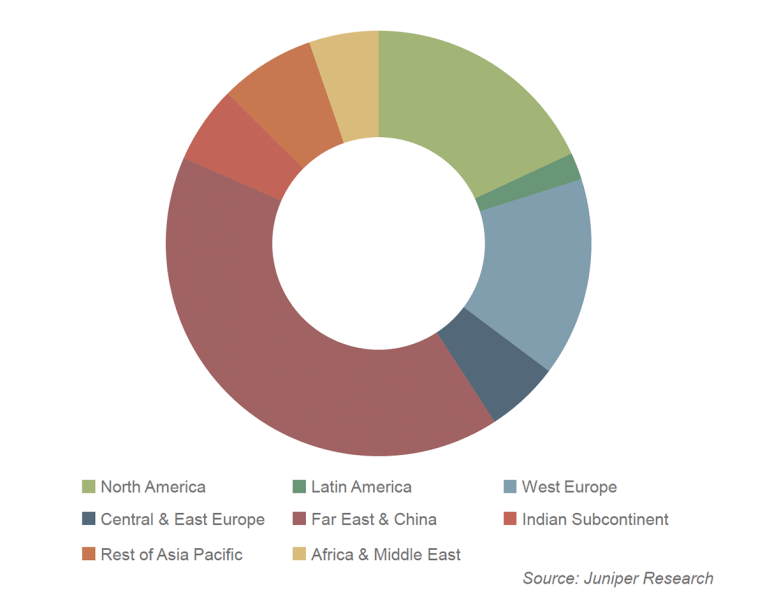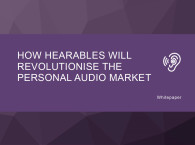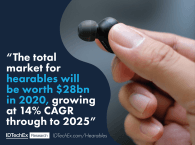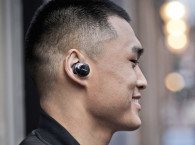
For this new 2020 report, Juniper Research defines an ear-based wearable device, or ‘hearable’, as "an ear-mounted device that supplies content or information to the wearer and at least one other function, through the use of on-device computation." This updated definition now distinguishes between hearables providing a form of more general computation and advanced headphones that purely provide app-enabled audio adjustments. Juniper's definition also excludes simpler Bluetooth headsets that only relay information generated from a source that is not a computer. Juniper also updated its form factor description to include earbuds and "headphones-based devices, which are a single unit between ear coverings".
Recognizing that "the addition of an integrated voice assistant is frequently the thing that makes many headphones and earphones qualify as hearables" the market research company also says that this is "unlikely to be a strong benefit," and that "while we expect voice assistants to become much more prevalent in hearables over time, they are not a selling point on their own."
"Integration with voice assistants makes hearables an ideal platform for smart home control, which frequently centers on the use of a voice assistant. For many platforms, going further than simple inclusion of a voice assistant will not be necessary, although we anticipate that more audio-focused brands such as Sony and Sennheiser may develop features to allow continuity and a ‘hand-off’ between hearables and home audio products," the report states.

But probably one of the most interesting new definitions included in this report is the introduction of Multimedia Hearables as a new category (see graphic above). "The multimedia hearables segment will be the largest by default, thanks to the way voice assistants can be integrated into audio devices. It will effectively become analogous with the premium segment of the audio industry, as premium audio products integrate voice assistants and other forms of technology to enhance the listening experience. Apps make this form of adjustment very simple for the end user, meaning that this is likely to be the default interface for a range of premium audio products, whether wired or wireless," Juniper says.
"As well as general music provision, there is also room in this segment for specialist devices, although these will never achieve a large presence in market, thanks to the size of the companies involved and other factors, such as a premium price or limited use case," they add.
The report, titled "Hearables Market: Value Chain Analysis, Future Features & Market Size 2020-2024," found that Apple’s AirPods have so far dominated the space and made hearable technology desirable. "This premium image will make hearables into a $135 billion industry by 2024," they add.
Specifically commenting on the impact on the hearing aid sector - a much speculated topic, Juniper says that "the ability of hearables to use AI to filter out some sounds and enhance others is a double-edged sword for established hearing aid manufacturers. Whilst it improves their product offering, it also introduces a whole new set of competitors. Companies that can sell directly to consumers, such as Nuheara, have a strong opportunity here."
"Another factor to consider is the short-term impact of COVID-19 on the hearing aid market; in-house personal fitting is currently not possible and is forecast to slow growth by up to 20% in some markets. Movement restrictions will severely impact professionally-fitted assistive hearables in 2020,” remarks research author James Moar. “However, these digital capabilities are increasingly common in hearing aids in general, so assistive hearables will recover rapidly as hearing aid demand picks up again.”
As a result, Juniper predicts that hearing-enhancing hearables will be the second-most lucrative hearables segment, worth over $63 billion by 2024, while shipping less than 20% of the market’s units.

To complement this report, Juniper Research made available in its website an updated free whitepaper, "Hearables ~ The Future of Personal Audio?"
audioXpress readers can also compare the market data and forecasts from Juniper's 2018 report on hearables here.
www.juniperresearch.com






